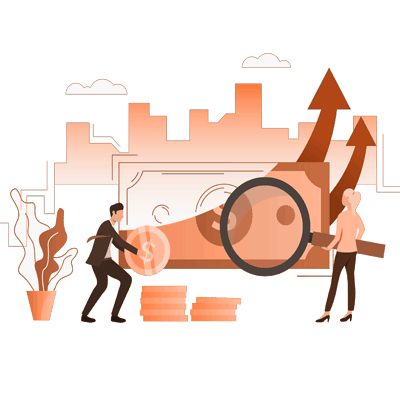Useful & Easy Tree Health Tips

Once you’ve planted your trees, you might think it’s best to leave their wellbeing to the elements. After all, trees tend to survive just fine in nature. But if you’ve invested money and time into your trees, you’ll need to keep them healthy through regular pruning, watering, and fertilizing. Not sure where to start? These tree health tips and tricks will keep your trees looking beautiful and free of pests.
Tree health tip #1: Measure and protect your tree’s critical root zone (CRZ)
The critical root zone usually extends from the area directly underneath the tree canopy out to the dripline. The dripline usually extends to the widest circumference of the tree’s branches.
We say “usually” because the CRZ may vary depending on the species and age of the tree, as well as environmental conditions.
To protect the CRZ and ensure optimal tree health, avoid the following activities:
- Cutting tree roots without the advice of a qualified arborist
- Contaminating the soil within the CRZ
- Parking on or driving through the CRZ with vehicles or equipment
- Using lawn mowers that could potentially wound roots
How To Measure CRZ
- Measure the tree trunk’s diameter in inches from a height of 4.5 feet, or about chest height.
- Multiply the diameter by 12 to find the CRZ radius in feet.
This will usually work out to 1 foot of CRZ radius per 1 inch of diameter at chest height. For example, a tree with a diameter of 20 inches would usually have a CRZ of 20 feet.
For some trees, the CRZ can extend as much as 3 times beyond the canopy. For an accurate CRZ measurement, contact your local tree service company.
Tree health tip #2: Water your trees at the outer edges of the dripline, not at the base of the trunk
Watering a tree at the base of the trunk can lead to root rot. A tree’s dripline naturally absorbs rainwater that falls from the leaves, hence the name. Roots are most absorbent at the outer edges of the dripline.
A good rule of thumb for caring for established trees is to water at around 3 feet outside of the dripline. Trees with deeper root systems require more water than those with shallow roots.
Young trees also require more water than established trees, especially in the summer within the first two years of planting. However, be sure not to overwater. If the soil feels moist to the touch, you usually don’t need to water.
However, trees are complex organisms. If you’re unsure when, where, and how often you should fertilize and water, consult your local arbor care company.
Tree health tip #3: Know your pests
Did you know that just over 20 pests are responsible for tree damage in North America? The gypsy moth and the emerald ash borer are two of the most common tree pests in Menomonee Falls and surrounding Waukesha County.
The gypsy moth arrived in Wisconsin in the 1970s and has been wreaking havoc on the trees of the Badger State ever since. Each year, gypsy moths single-handedly strip the leaves of over 1 million acres of trees across the U.S.
Gypsy moth outbreaks occur roughly once every decade. Waukesha County is one of many counties subject to quarantine by the DNR. The quarantine prohibits the transport of items that may contain gypsy moths.
The emerald ash borer (EAB) is also prevalent in Waukesha County. These pests feed on the inner tissues of ash tree bark. Adult females lay eggs from June to September. If you notice D-shaped holes in your ash tree, you’ve got an EAB infestation. Infested trees are more likely to fall and cause property damage.
If you suspect pests are harming your trees, contact your local Menomonee Falls tree service company. We pride ourselves on our prompt service and experienced team.
Tree health tips and tricks: wrapping up
Knowing your trees’ CRZ will help you determine where and how much to water. It’s also important to know the pests of Waukesha County and how to protect your trees from infestations.
Got tree care questions? We’ve got answers. As Menomonee Falls’ premier tree company, we pride ourselves on our attention to detail. Our experienced arborists will diagnose and treat health issues to keep your yard — and the state’s plant life — healthy and safe.

Frequently asked questions about emergency tree removal

Do all fallen trees count as an emergency?
Not necessarily. If a fallen tree doesn’t cause property damage or block important
How much will emergency tree services cost?
That depends on the nature of the emergency and the scope of the job. We understand that emergencies are stressful, so we’ll work with you to set a reasonable rate.
Will my home insurance provider cover the cost of tree emergencies?
That all depends on the type of policy you have and the nature of the emergency. If you’re concerned about home insurance costs, contact your provider.
Your safety is our top priority. If a tree falls on your property, get yourself away from danger before calling your local emergency tree removal service. We’ll deploy a team of licensed technicians to remove the emergency immediately.
Call Your Menomonee Falls Tree Service In An Emergency
If you have a tree emergency in the Menomonee Falls area, give us a call once you’re safe. We’ll respond promptly and professionally to remove the immediate danger, assess any potential risks, and handle cleanup.